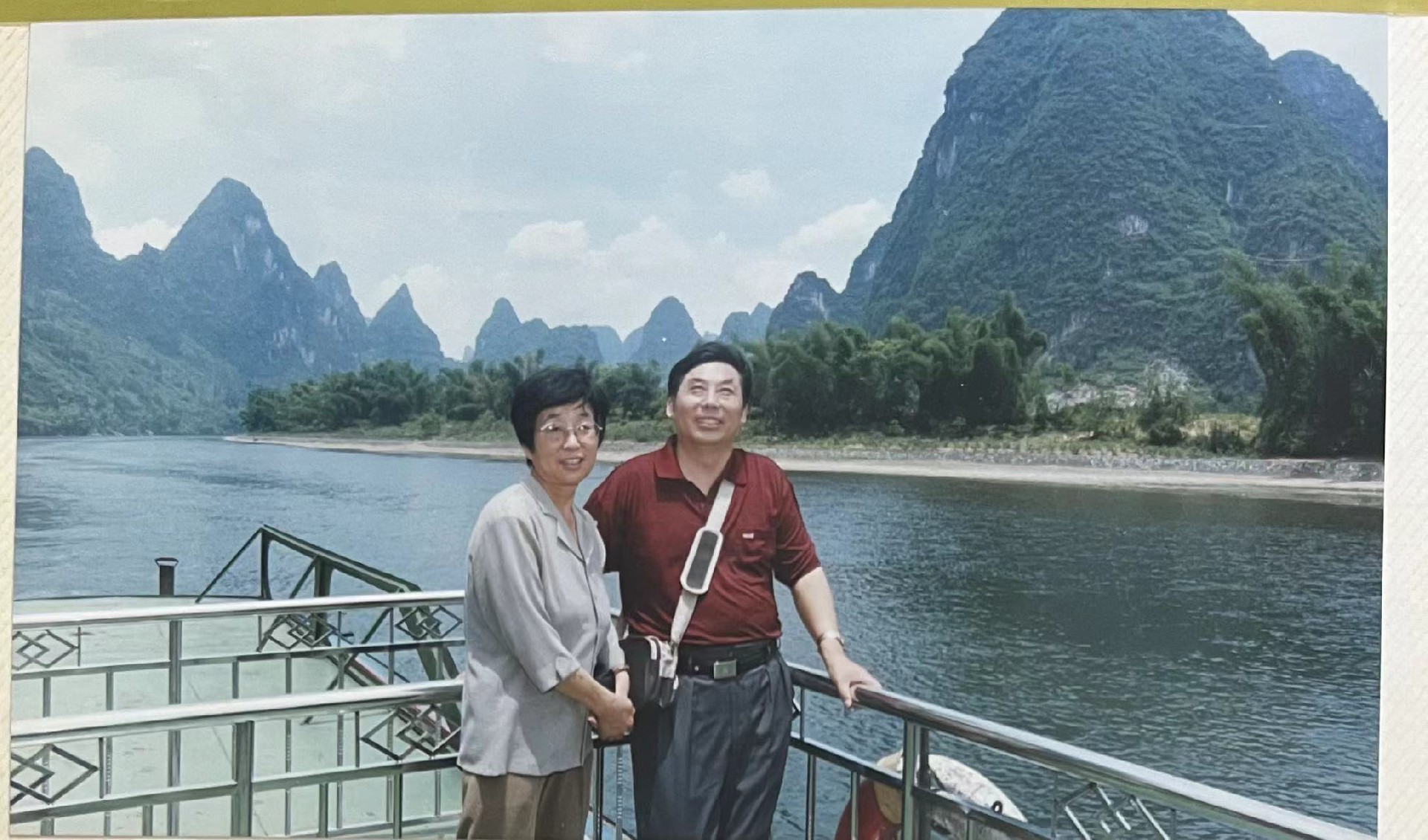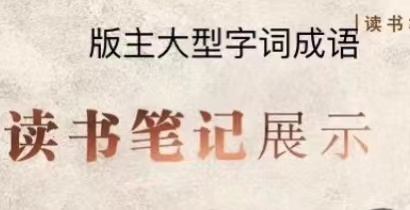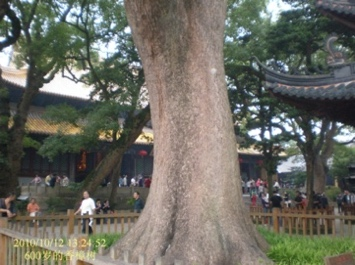It was two years and half since my thigh bone neck broke when the summer vacation began in 2003. The focus of the fracture remained the same and three nails fixing it were still in. In the foregoing term I went to the class to give lessons with a walking stick. Every summer vacation there was a quota on the number of tourists, organized by the trade union of the school, everyone’s subsidy being ¥400. You must pay the excess expense. Mailan Zhang and I had never shared this welfare, always self-effacing. Our retirements were drawing near, so we applied for the vacation journey. The route was first to arrive at Wuhan City and then to pay a visit to Guilin, Guangxi. Traveling with a walking stick, I had some mental loads, worrying that my slowness would delay the act of the whole team. I had such a feeling that I could walk for a rather long way. Fearful of not being able to follow the others, I decided to start to act before them when we had to walk. “Early birds catch the worms.” Our two sons had gone abroad, nobody helping us or interfering with us. Let’s go travelling boldly. It was lucky that all the team members belonged to our school. Bravely, I joined them with one walking stick, helped by my wife and colleagues.
The summer vacation had just begun, on 15 of July, when we were led by a guide from Xuzhou to Hankou. The next day we rode on a tour bus, crossing the Yangtze River on the bridge and arriving at the side of Wuchang. We climbed on Huanghelou, which was located on the Huanghe rock of Snake Mountain projecting over water. It was first constructed during the three Kingdoms, and then was ruined and reconstructed several times. The present building was constructed in 1981, designed according the shape of the original “Tongzhi Building” of the Qing Dynasty. It was still located at the head of the Snake Mountain. The main building was 49 meters high and was composed of five floors, slowly forming a tine, each floor with flying brims and looking the same from the four directions. It faces the Yangtze River, with vast and mighty tide surging and is located just at the cross of the River and the Beijing and Guangzhou Railway. When you travel along the Yangtze River please don’t always think that it flows from the west to the east and call the two sides, south and north. If so, you will lose the orientation. The River here runs from the southwest to the northeast. So we may say that Wuchang is on the east side and Hankou and Hanyang on the west. On the contrary, Han River runs from the northwest to the southeast, so we may say that Hanyang was on the south side and Hankou on the north of Han River.
With the aid of my colleague, Mr. Gu, I got to the top floor, the Lookout Hall, so that I could recognize the orientation of the three towns of Wuhan. The charming and gentle landscape appeared clearly in our sight. Facing the vast River and the Wuhan Yangtze River Bridge, known to me during my early primary school, the sentences from the poet written by Mao Zedong emerged in my mind: “Sails move with the wind. Tortoise and Snake are still. Great plans are afoot: A bridge will fly to span the north and south, turning a deep chasm into a thoroughfare”. I judged bravely that the Snake Mountain was under my feet and the other end of the Bridge was the Tortoise Mountain.
The afternoon of the same day saw us taking the train from Wuchang to Guilin, Guangxi. Running the whole night, our train arrived at the Guilin Railway Station. After checking in a hotel we began to tour in the city. I remembered studying the subject of geography during the junior middle school and got to know the famous sentence: “East Or West, Guilin Landscape Is Best!” Our geography teacher seemed to have been to Guilin and described in detail the Elephant Nose Mountain and Lijiang River. What the teacher said caused a mysterious feeling in my mind. How a mountain looked like a huge elephant and its nose reached the river, drinking water. How a natural river had such clean water that you could see its bottom. When you dived in the river, you could be seen clearly by the people on the bank. Guilin, Guangxi, was so far away that nobody of my family could reach. I did not dare to dream of enjoying the beauty here with my own eyes. During my senior middle school the film “Liu Sanjie” (Sister Liu) was showed and we were shocked by the water and mountain of Guilin. I have been longing for travelling to the southwest since then. Now finally I was here on the scene.
The Trunk Mountain was also called the Elephant Mountain, looking like a real huge elephant, drinking water from the river, absolutely lifelike. I had climbed Tai Mountain, ridges and peaks one after another; I had sight-seen Xiang Mountain in Beijing, red maple leaves similar to fire; I had never seen such mountains of Guilin. Guilin’s mountains were so strange that they went up directly from the ground separately, like an old man, a huge elephant, a camel…surprising peaks in line, too many shapes for the eye to take in. So beautiful were Guilin’s mountains, which seemed like green barriers, new-born bamboo shoots, reflection in the water, colorful and beautiful. How dangerous were they, frightening apex standing upright and bizarre stones being rugged, and a slight carelessness seemed to cause them to fall down. The natural stone wall seemed like being laid by man with an upright line or like a giant splitting it with a unique sword, making you unbelievable. I saw an upright stone wall, more than 100 meters high with a small tree on the top, whose root system appeared in my sight, fibrous root growing where there was some earth in the stone gaps, winding down to the ground and reaching to the deep earth. It was not strange for a huge tree to grow among the rocks, whose root system had to reach the ground, going a long way between the stone gaps, to absorb the nutrition from the earth. It is easy to image that a tree seed fell into the stone gap and continuous rain made it shoot up, whose foot wound down the stone gaps, some earth or weathering stone powder between them supplied nutrition for the need of their initial life. As time went on, the foot reached the ground in the end and then grew into the deep of the earth. The sunlight shined on its branches and leaves, the photosynthesis happened and the power to absorb the nutrition became stronger and stronger, making it climb from the earth to the top of the tree, passing a very long way. This was the life power. Facing the small tree on the hill top, I thought and thought. Every one of us cannot choose where we were born and in what kind of circumstances we were living. However, as long as we try hard just like the small tree to get the existing space we are sure to have the perfection, greatness and dignity of our own life. We will never feel ashamed of the life full of spiritualism and enthusiasm given to us by the natural mother.
We got to the camel mountain of Seven Star Park where the president of the United States, Bill Clinton, made a speech about the environment protection, which made us have a marvelous feeling. The mountains, the trees, the grasses and the waters here were all beautiful and everybody enjoys such an environment. It was not strange that the vice premier Yi Chen wrote such a sentence, “I would rather be a citizen of Guilin than an immortal.”
On 18, we took a tour bus to the Silver Rock Solution Cavity of the Town Yangshuo. The space of the cavity was surprisingly large, reaching 12 mountain peaks, named as the wonder of the world cavity by a French expert at geological lava. I visited a solution cavity in Dingshu Town of Yixing City of Jiangsu Province in the 1980’s, which was much smaller than that of Yangshuo. The Silver Rock Solution Cavity was made up of the lower cavity, the great hall and the upper cavity. It took us three hours to wander in it. Facing such grand and strange cavity, my imaging power was boosted. It was sure that a volcano broke and was not able to break free, which was hindered by the hard shell of the mountain and was stopped suddenly, the hot magma made up of all kinds of metal flowing down along the rock slope and then everywhere on the flat floor, forming all shapes of stalactites. Some of them looked like silver, bright and transparent; some were colorful and shining bright. It was no wonder that many people said that you would not be lack of money once you entered the Silver Rock Cavity. People endowed the different shapes made by the natural power with good-sounding names: the Music Rock Screen, the Moon Palace, the Flying Fall of the Snow Mountain, Three Most Beautiful Shapes; the Buddha Talking about the Lection, the Unique Pole Holding Up the Heaven, and the Pearl Umbrella in the High Antiquity, the Three Cowries of the Cavity.
The next day, namely on 19th of July of 2003, we rode in an excursion steamer along the Li River, seeing the most famous “Nine-horse Drawing Mountain” and Inverted Reflection of Huangbu in Water, which was at the back of the 20-yuan note. Really, “the boat is floating on the water, while the tourists are travelling in the picture.” The Li River was almost 100 li long, water winding round the green mountains and the green mountains floating on the water. We brought a camera with us, a gift presented us by a computer merchant and the photos produced by it were not ideal. We decided to spend 130 yuan taking photos by a specialist. When I wrote this section I used a scanner to turn some of them into digital ones. I placed two of them below to add to the power of the communication and persuadability.

Mountain and Water in Guilin
Proofreading on Dec. 25 2018 in Fenghuayuan Xuzhou
Uploading on Aug 7 2023 in Xuzhou









